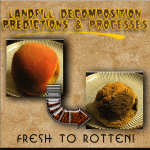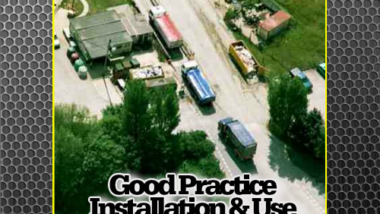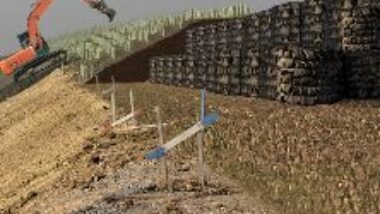
Government Sponsored Research Shows Slow Waste Decomposition Means Landfills Present 1000 Year Liability
(This article is based upon one which we first wrote for this website in 2004. The issues raised remain largely un-addressed and we think that they are as pertinent today as they were at the time.)
Research published in September 2004, which was commissioned by the Environment Agency has shown that a complete rethink is needed to re-assess the length of time that a hazardous waste1 landfill will naturally decompose and flush-out to the point that no liability remains to the environment. At the moment the UK Environment Agency requires all landfill operators to design, and then set aside funding for liabilities for durations extending no more than the 50 to 100 years of “aftercare”. There is a big mis-match here!
We have made our own video for you below, which we hope will enjoy, and we hope it gets our message across better than by using text:
Also, you can watch this on the YouTube website, here “How Long Does it Take for Trash (Waste) to Rot“.
This is because it was assumed that natural composting, and then flushing, of the waste in modern licensed landfills would take place to complete waste decomposition over an unrealistically short timescale. The real “timescale for completion” (i.e. the time needed for the waste to rot and be washed-out, so that what remain is inert and harmless) for all sanitary landfills will be far longer.
This fact is immediately visually apparent as soon as anyone digs into a landfill anywhere, as our opening illustration shows. What is of even more concern is that half of all hazardous waste will take double this time, or two thousand years to become harmless to the environment This is a major concern since most lining systems will not in all probability last for more than a few decades.
The long timescales to complete waste decomposition now being cited, also make geological effects far more important as factors. Geological events such as erosion, earthquake and groundwater level changes will now require much more detailed consideration. We said this many years before (in fact as long ago as 1993!). At that time the landfill design engineering consultancy I worked for, said that:
“The timescales being allowed [assumed by the government of the day] for Municipal Waste stabilisation are too short.”
Also;
“It is common knowledge that newspapers can be exhumed from landfills which are over 30 years old, yet remain perfectly legible, indicating that biological decomposition has barely begun. Such items are excavated from landfills which were operating to standards prevailing during the 1950s and 1960s. The process of landfilling then was very different from the massive, high input, high density, deep, engineered deposits of today. At a modern landfill waste decomposition is expected to take even longer to complete (return to normal use in a condition free from risk to the environment).”
We published an article at that time on the “Timescale of Completion” which can be downloaded here as a pdf file [Link broken – access to document requested; August 2014].
1 – Hazardous Waste as defined in the Waste Acceptance Criteria (UK) which became law in July 2005.
Landfill Sites – 3 Compelling Reasons to Bury the Use of Dumps
Landfill Sites are not sustainable, and here are 3 compelling reasons to bury the idea that we continue to use landfills (dumps) for municipal waste beyond the next 10 years. All waste has to be disposed of in a safe manner. If not it is a major health problem in densely populated urban areas, second […]
Waste Decomposition and Degradation of Waste in Landfills
Waste Decomposition: The Main Stages of waste decomposition, otherwise known as the waste degradation process An understanding of the Main Stages of waste decomposition. Which is alternatively called “the waste degradation process” is essential to understand how a landfill will gradually change over many years. We are often asked how many years will it take […]
Aerobic Landfill and Why The Subject Will Not Be Forgotten
A key topic raised in many countries, not least Japan, is why most other industrialized nations have gone so strongly for sanitary landfill design, which locks up waste and only slowly allows it to decompose with air (anaerobically) and not aerobic landfills which rot away quickly. The awful longevity of sanitary landfilling, becomes clear when […]








